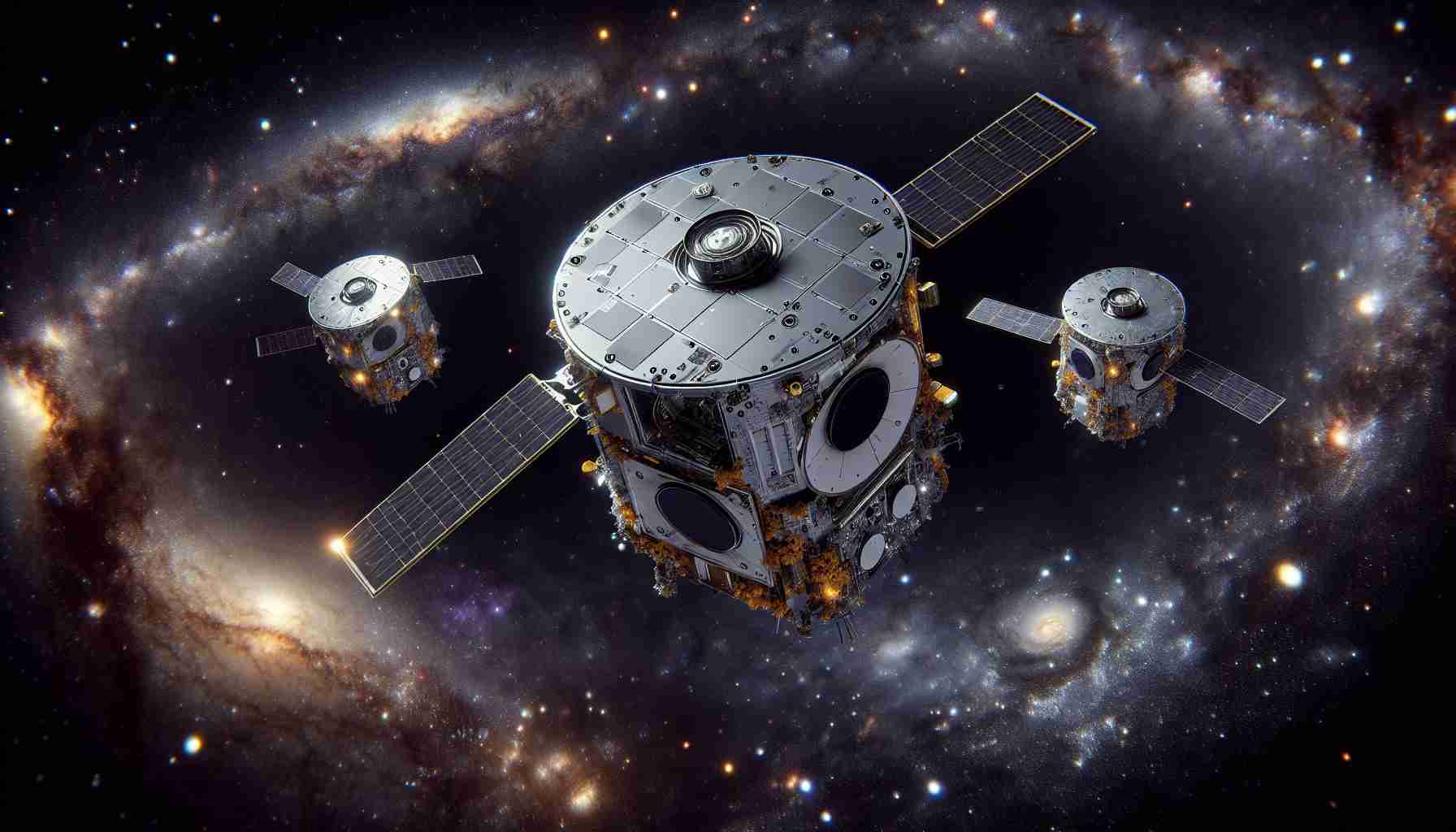- The STARI mission, funded by a $10 million NASA grant, aims to revolutionize the study of exoplanets using CubeSats.
- Scheduled for a 2029 launch, the mission involves two briefcase-sized satellites flying in precise formation to capture starlight and study distant worlds.
- Led by astronomer John Monnier and aerospace engineer James Cutler, STARI is a collaborative effort including experts from Stanford and Georgia Tech.
- The mission utilizes affordable CubeSats to advance space exploration without high costs, setting the stage for future discoveries.
- STARI highlights the power of interdisciplinary collaboration and innovation in expanding our understanding of the universe.
Under the canopy of stars, a revolution quietly brews in the labs of the University of Michigan. Armed with a $10 million NASA grant, the STARI (STarlight Acquisition and Reflection toward Interferometry) mission promises to reshape how we understand worlds beyond our own. Picture this: two briefcase-sized CubeSats, dancing in precise formation across the cosmos, a celestial ballet with the ambitious goal of unearthing secrets of distant planets.
Led by a visionary team, including astronomer John Monnier and aerospace engineer James Cutler, this mission readies for a monumental launch in 2029. STARI isn’t your typical space sojourn. It’s a daring test—a beacon of hope in the pursuit to pinpoint planets capable of harboring life. Imagine capturing the stellar whispers from these far-off worlds, deciphering their tales through starlight bounced between these floating cubes.
It’s not an endeavor the University tackles alone. The mission unites brilliant minds nationwide—Simone D’Amico from Stanford, E. Glenn Lightsey from Georgia Tech. They come bearing extensive expertise in satellite formation flying and optical interferometry, blending their knowledge to orchestrate this unprecedented symphony among the stars.
STARI’s brilliance doesn’t just lie in its scientific ambitions but in its method. By leveraging affordable CubeSats, these researchers sculpt a path toward grander missions without the extravagant costs. It’s innovation with a vision—to ignite a cascade of discoveries that stretch beyond the limits of current technology.
The takeaway? STARI illuminates the possibility within collaborating across disciplines to bridge distances in space. As these satellites take flight, they embody a daring leap forward, bringing the universe’s enigmatic whispers within humanity’s grasp.
The Next Frontier: How STARI Mission Could Transform Our Understanding of Distant Worlds
How-To Steps & Life Hacks
1. Innovative CubeSats Assembly: Interested in creating your own CubeSat? Check out the basics of satellite design, including selecting the right materials and miniaturized components. Many universities offer open courses on these topics.
2. Follow the Mission: Stay updated on the STARI mission by following the University of Michigan’s space research announcements for updates on launch preparations, mission progress, and scientific discoveries.
Real-World Use Cases
The STARI mission is not just about discovering distant worlds; it sets a precedent for cost-effective space research using CubeSats. Real-world applications can expand into climate monitoring, disaster surveillance, and Earth imaging, using similar small satellite technology.
Market Forecasts & Industry Trends
According to a report by Markets and Markets, the CubeSat market is projected to grow from USD 152 million in 2021 to USD 375 million by 2026, driven by advancements in miniaturization and the expanding deployment of satellite constellations for Earth and space observations.
Reviews & Comparisons
The STARI mission employs CubeSats, which are significantly more cost-effective than traditional satellites used by missions like the Hubble Space Telescope. CubeSats enable more frequent and diverse missions at a fraction of the cost.
Controversies & Limitations
One limitation of CubeSats is the restricted onboard power and propulsion, limiting mission duration and capabilities compared to larger satellites. Critics argue that while affordable, the data quality may not match larger missions; thus, maintaining balance in mission objectives is crucial.
Features, Specs & Pricing
– CubeSat Size: Each STARI satellite is approximately the size of a briefcase (~10 cm x 10 cm x 30 cm).
– Cost: Traditional large satellites can cost over $500 million, whereas CubeSats are far cheaper, often under $2 million per unit, promoting accessible space exploration.
Security & Sustainability
CubeSats provide an environmentally friendly option for space missions due to their smaller size and reduced fuel consumption. However, increasing the number of satellites may contribute to space debris, necessitating sustainable deployment strategies.
Insights & Predictions
The success of the STARI mission could pave the way for future CubeSat missions focused on deep space exploration, offering insights into habitable zones beyond our solar system. It encourages the democratization of space exploration, inviting collaboration from new sectors worldwide.
Tutorials & Compatibility
Numerous online resources offer tutorials on CubeSat design and programming for those eager to learn more. Educational platforms are increasingly integrating space technology courses, compatible with Raspberry Pi and Arduino systems for amateur enthusiasts.
Pros & Cons Overview
Pros:
– Cost-effective and quick development.
– Encourages collaboration across disciplines and institutions.
– Provides real-time data and deep space notes.
Cons:
– Limited operational capabilities compared to larger satellites.
– Potential increase in space debris if not managed properly.
Actionable Recommendations
– For educators: Integrate CubeSat projects into STEM curricula to inspire the next generation of aerospace innovators.
– For students: Enroll in free online courses in satellite technology to gain hands-on experience with CubeSat programming and design.
– For space enthusiasts: Join forums or local clubs dedicated to satellite technology to stay updated on new developments.
With the scope of space exploration expanding rapidly, the STARI mission exemplifies the transformative potential of interdisciplinary collaborations and innovative technology. Keep an eye on platforms like NASA and University of Michigan Space Institute for future developments and opportunities to get involved.













